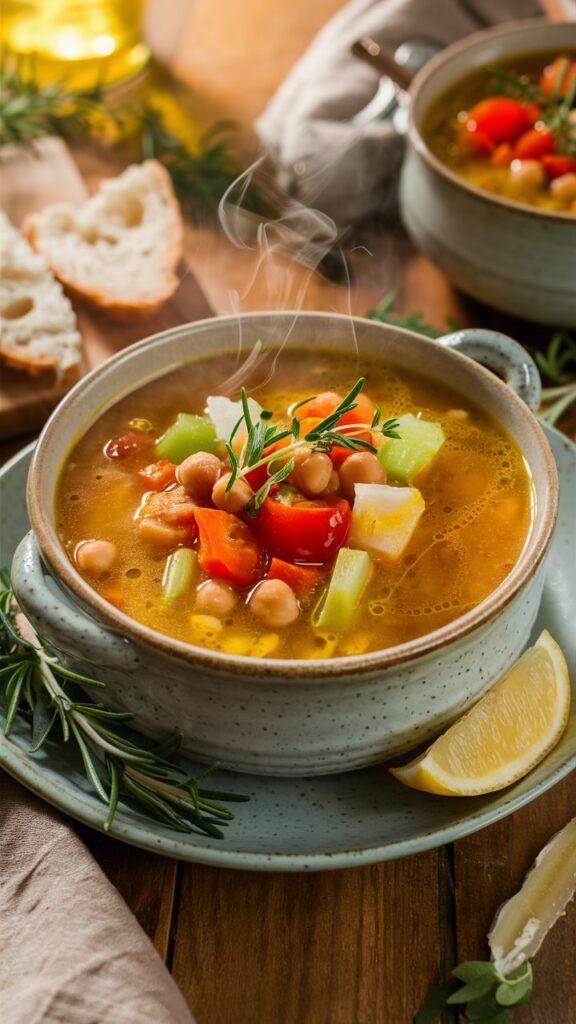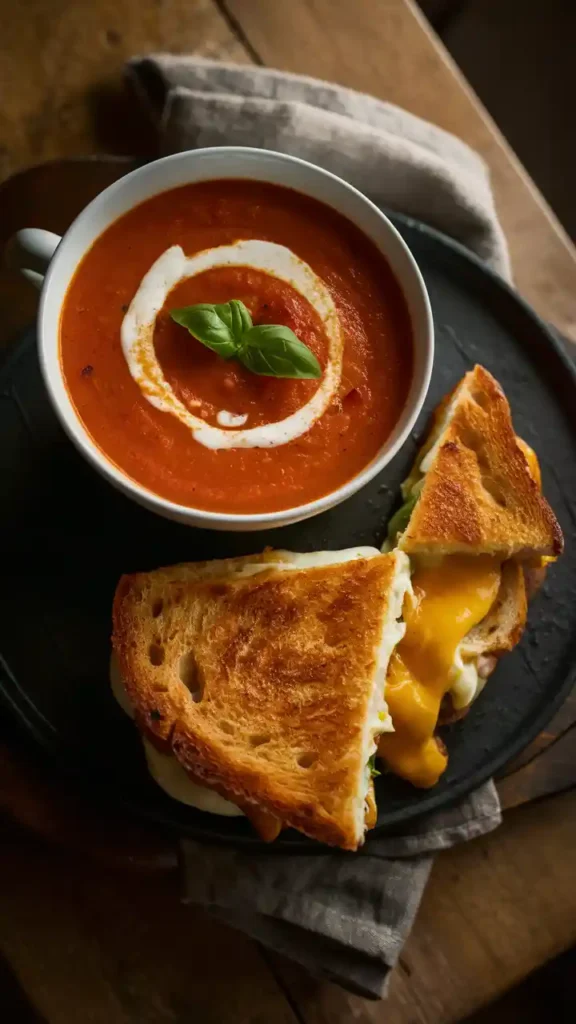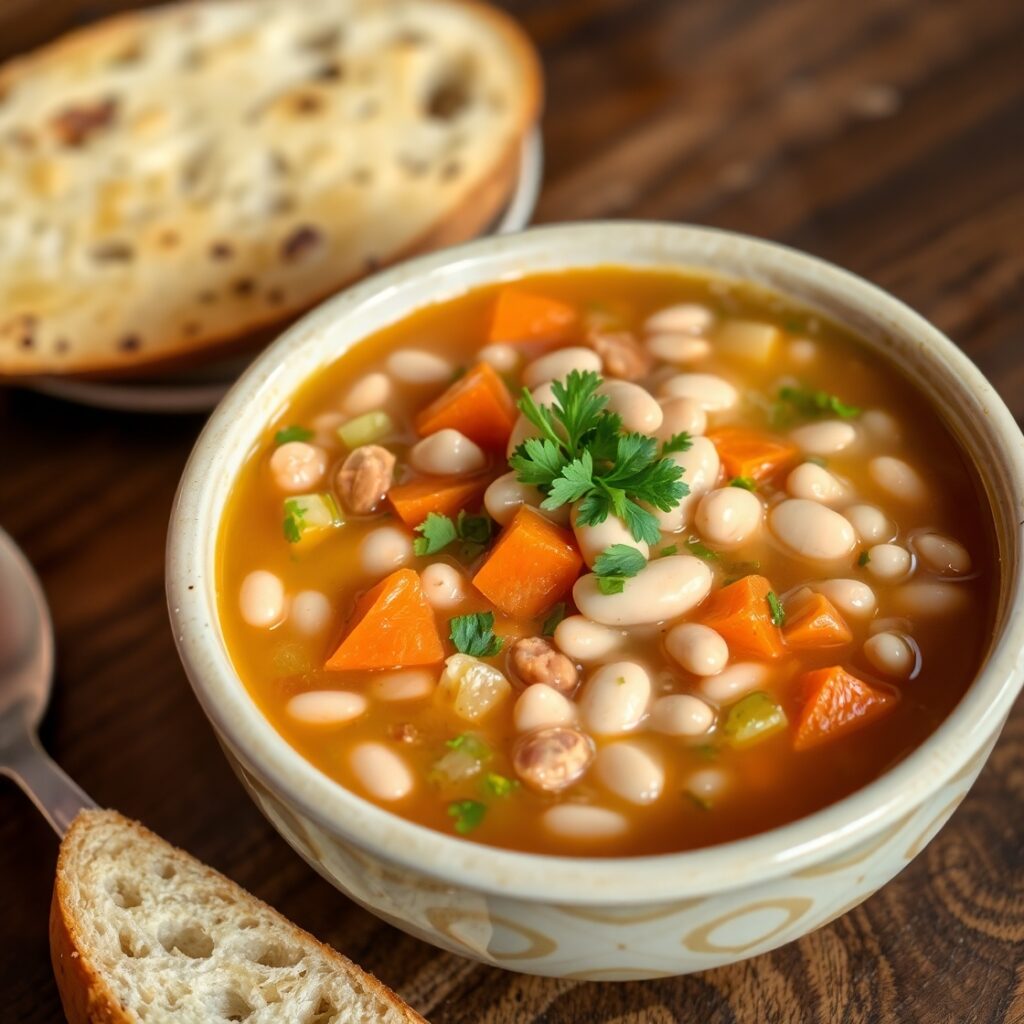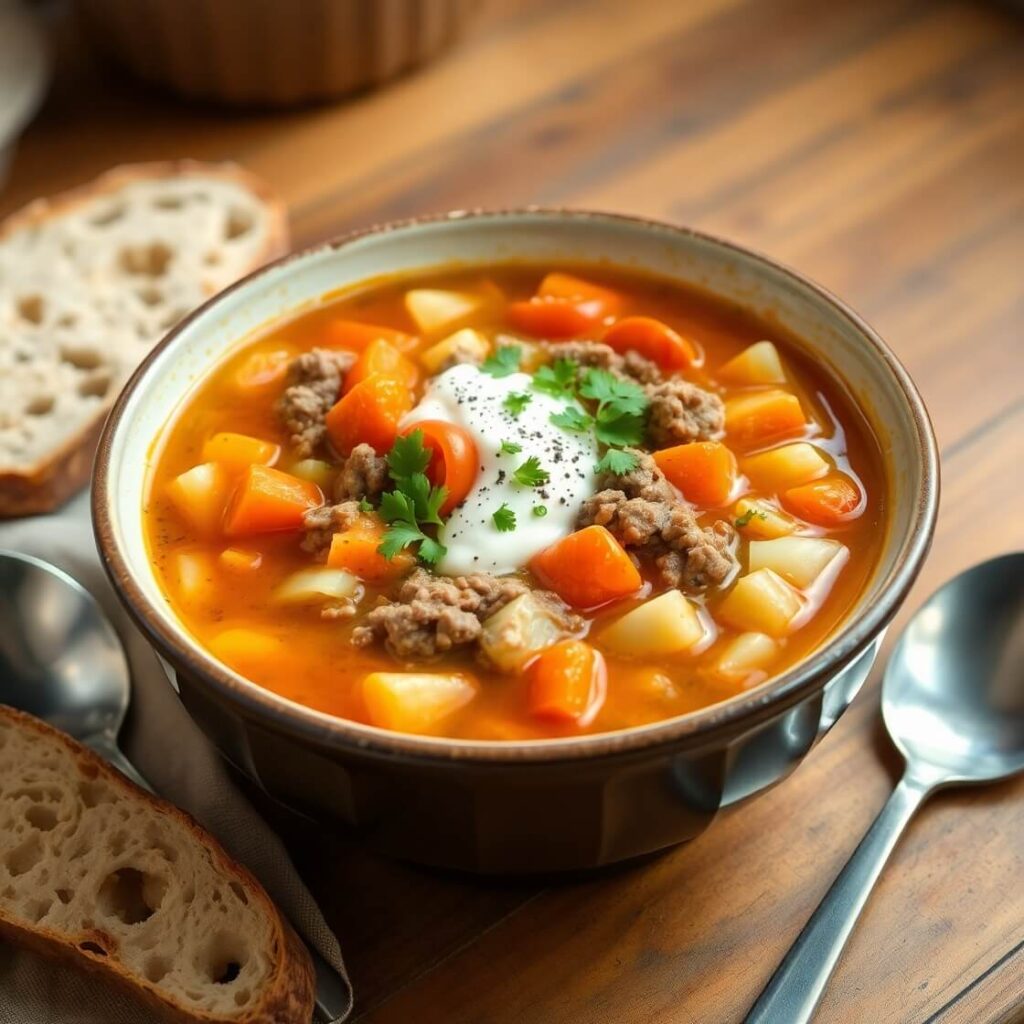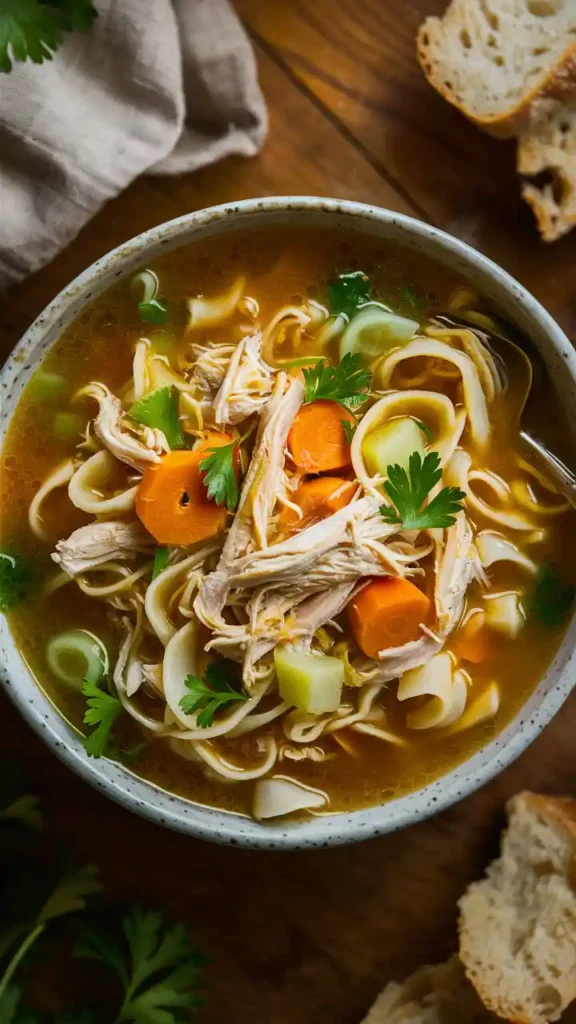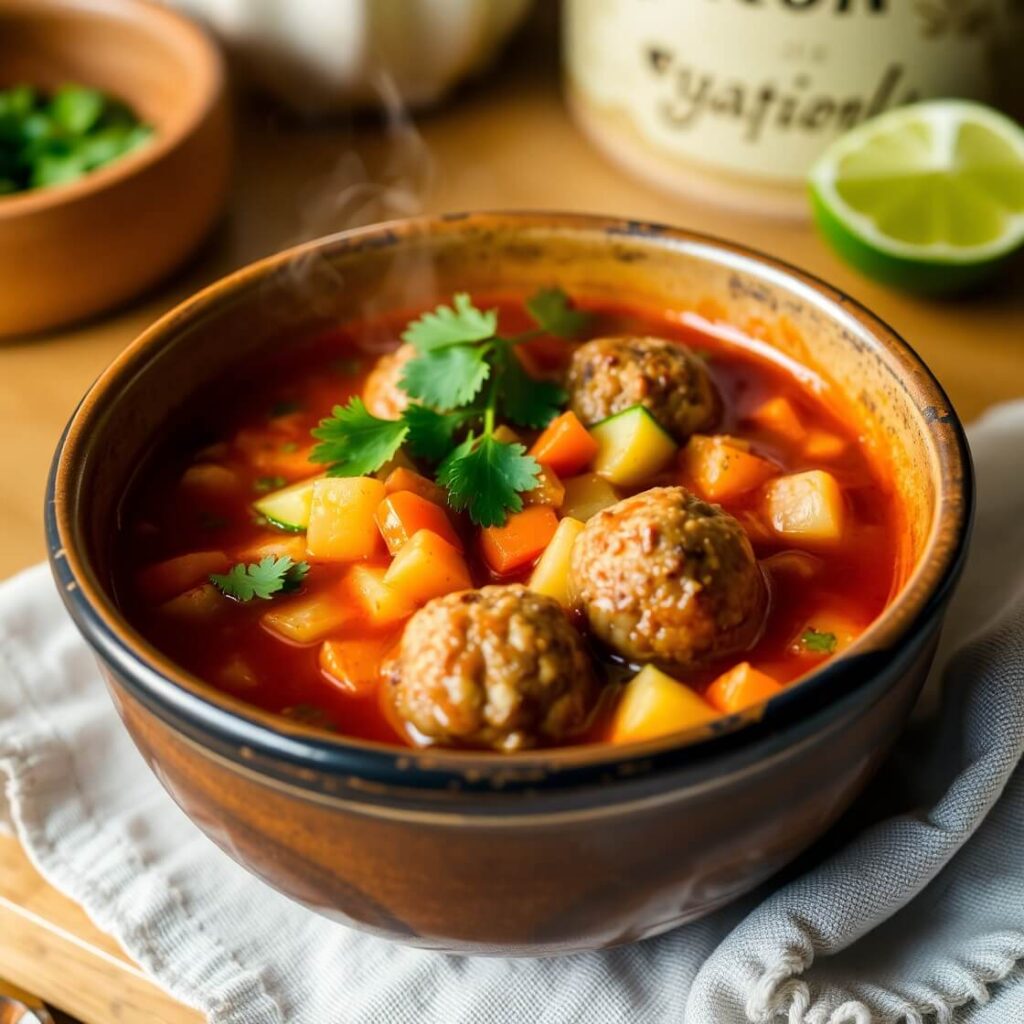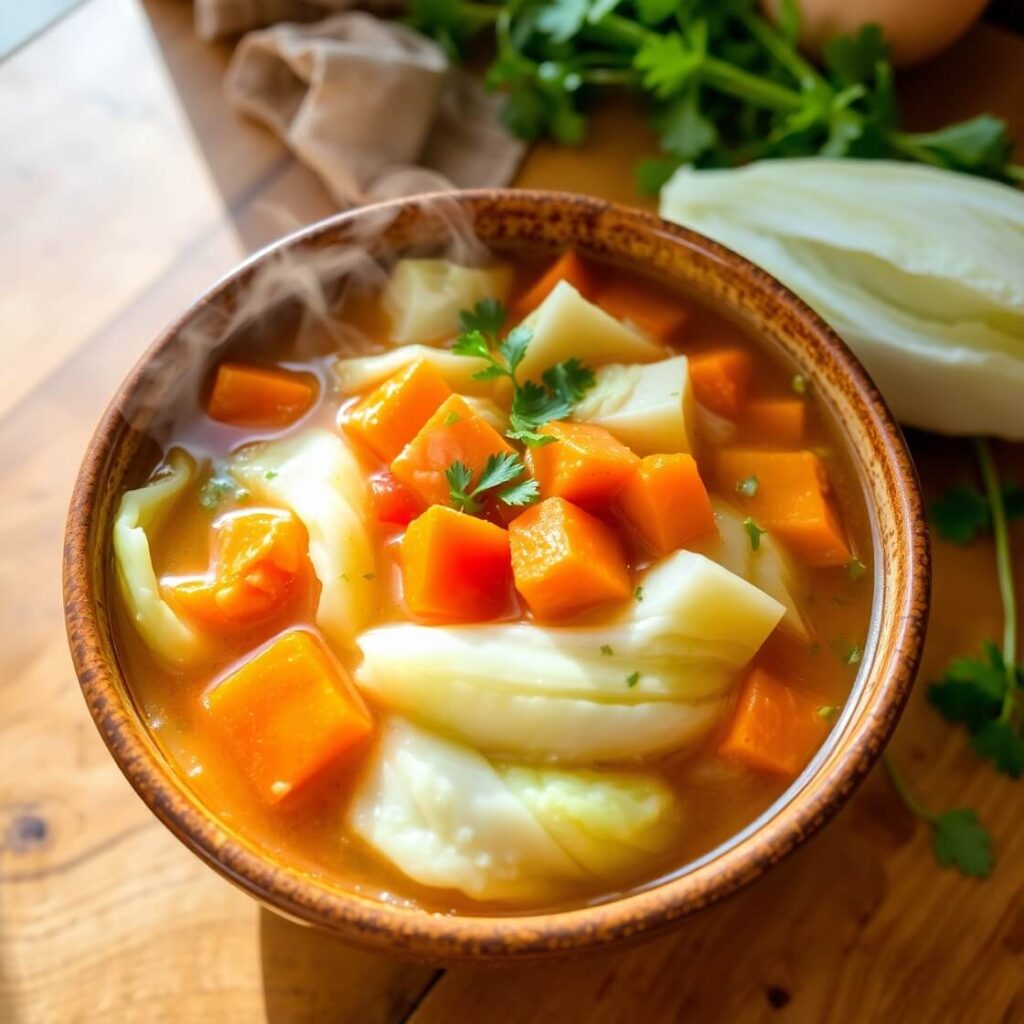Viral Italian Penicillin Soup Recipe
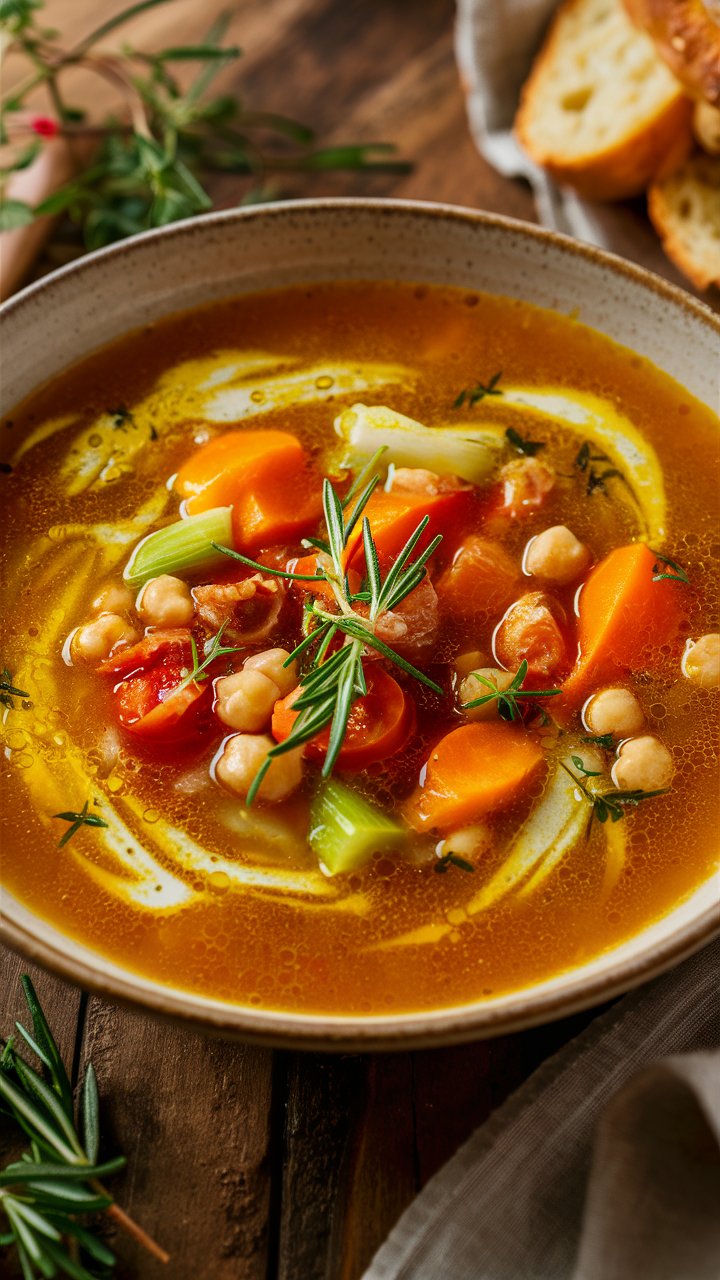
The first time I made what my grandmother called “Italian penicillin soup,” I nearly ruined it. I had left the pot on high heat while chopping herbs, and within minutes, the broth threatened to bubble over like an impatient storm. The kitchen filled with a strong herbal steam, and I panicked, fumbling with the lid and spoon as though I was performing emergency surgery.
My grandmother, who had been sitting at the kitchen table shelling peas, simply laughed and said, “You’re rushing it. Good broth doesn’t like impatience.” She was right. I lowered the heat, took a deep breath, and let the soup simmer slowly, coaxing out flavors instead of forcing them. That lesson stuck with me: soup, especially this one, needs time, space, and trust.
Since then, Italian penicillin soup has become my go-to comfort food whenever colds creep into the house, or even when spirits are low. Unlike the clear chicken soup my friends grew up with, this version is heartier—filled with garlic, lemon, parsley, tender chicken, and sometimes tiny pastina noodles or rice. It’s medicine disguised as a meal, a reminder that care doesn’t have to come in bottles.
What I Learned the Hard Way
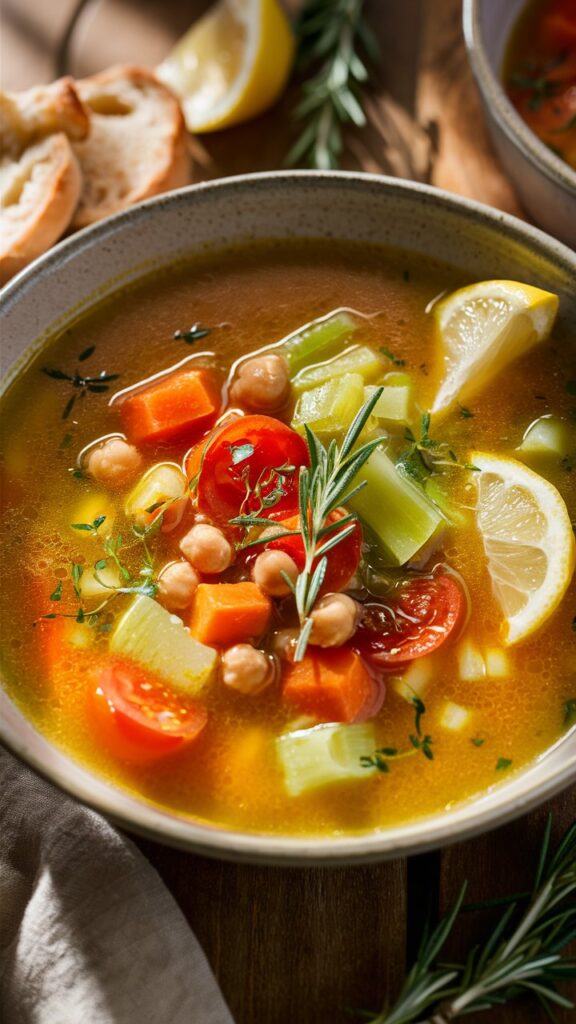
That early mishap taught me a few lessons I’ll never forget:
- Always start with a gentle simmer, never a furious boil. It keeps the broth clear and the flavors balanced.
- Garlic burns easily—add it once the onions have softened, not before. I learned this the hard way when my whole kitchen smelled sharp and bitter instead of warm and welcoming.
- Fresh herbs should always be added at the end. The first time, I tossed them in too early, and the parsley turned limp and gray before I even ladled the soup.
These small mistakes transformed into pro notes I keep in mind every time I make it. Italian penicillin soup isn’t just about following a recipe—it’s about coaxing comfort from humble ingredients and not letting impatience ruin the magic.
The Ingredients That Matter Most
When people ask what makes this soup different from classic chicken soup, I always point to the Italian pantry. Here’s what truly shapes it:
- Chicken: I prefer bone-in chicken thighs or drumsticks. They add richness that boneless cuts just can’t match. My grandmother insisted that the bones carried “the soul” of the soup.
- Garlic: Lots of it—this is the Italian twist. Not the faint whisper you might add to sauces, but bold cloves that perfume the broth. If you’re fighting a cold, the aroma alone feels like medicine.
- Lemon: The brightness of fresh lemon juice balances the richness of the chicken and makes each spoonful feel restorative. Some families add just a squeeze; I love stirring in plenty.
- Parsley: Always fresh. It adds both color and a grassy freshness.
- Carrots, celery, and onion: The holy trinity of almost every good soup base. Italians may not call it mirepoix, but the principle is the same.
- Pastina or rice: Not every family uses this, but mine did. Those tiny star-shaped pasta pieces made the bowl feel playful and filling, especially when we were kids.
Substitutions are easy. If you don’t have pastina, orzo or small shells work. If you prefer gluten-free, rice makes an excellent alternative.
How to Bring It All Together
Whenever I teach someone this recipe, I tell them to cook with their senses, not just timers. Here’s the flow:
Start with olive oil in a large pot. When it shimmers, add diced onion, carrot, and celery. Let them soften until the onion turns translucent—you should smell sweetness rather than raw sharpness. Then comes the garlic. Stir gently for just a minute, until fragrant, never letting it brown.
Add the chicken pieces and enough water or chicken stock to cover. Bring it slowly to a simmer—this is where patience comes in. As it cooks, foam will rise to the top. Skim it away with a spoon; this keeps the broth clear and light.
After about 40 minutes, the chicken should be tender enough to shred. Remove it, let it cool slightly, and tear the meat into bite-sized pieces, discarding the bones and skin. Return the chicken to the pot along with fresh parsley, lemon juice, and, if using, pastina or rice.
The soup is ready when the pasta is tender and the kitchen smells like comfort itself. Taste for salt, pepper, and maybe a drizzle of extra virgin olive oil to finish.
Print
Italian Penicillin Soup
- Total Time: 1 hour
- Yield: 4-6 1x
- Diet: Gluten Free
Description
Italian Penicillin Soup is a soul-soothing, herb-infused Italian classic designed to comfort and heal. Brimming with garlic, fresh herbs, hearty vegetables, and a rich broth, this soup offers a perfect balance of flavor and nourishment. Ideal for chilly days or when you need a restorative meal, it’s simple to prepare but full of depth. A splash of lemon juice brightens the finish, making every bite vibrant yet comforting. This recipe suits gluten-free diets and can easily be adapted for vegans by using vegetable broth.
Ingredients
- 4 cloves garlic, finely chopped
- 1 large yellow onion, diced
- 2 carrots, diced
- 2 celery stalks, diced
- 2 sprigs fresh rosemary
- 2 sprigs fresh thyme
- 1 bay leaf
- 4 cups chicken or vegetable broth
- 2 medium ripe tomatoes, chopped
- 1 cup cooked chickpeas (or cannellini beans)
- 2 tablespoons extra virgin olive oil
- Salt and freshly ground black pepper, to taste
- Juice of half a lemon
Instructions
-
Heat olive oil in a large pot over medium heat. Sauté garlic and onions until translucent.
-
Add carrots and celery; cook until softened.
-
Stir in rosemary, thyme, and bay leaf.
-
Pour in broth and bring to a simmer. Cook for 30 minutes.
-
Add tomatoes and chickpeas, simmer for another 10 minutes.
-
Season with salt and pepper. Remove bay leaf and herb stems.
-
Stir in lemon juice before serving. Drizzle with olive oil.
Notes
Use fresh herbs whenever possible for the best flavor. Adjust seasoning gradually and taste throughout cooking. For a vegan version, substitute broth with vegetable stock.
- Prep Time: 15 minutes
- Cook Time: 45 minutes
- Category: Soup
- Method: Stovetop simmer
- Cuisine: Italian
Nutrition
- Serving Size: 1
- Calories: 180
When My Family Calls It “Medicine”
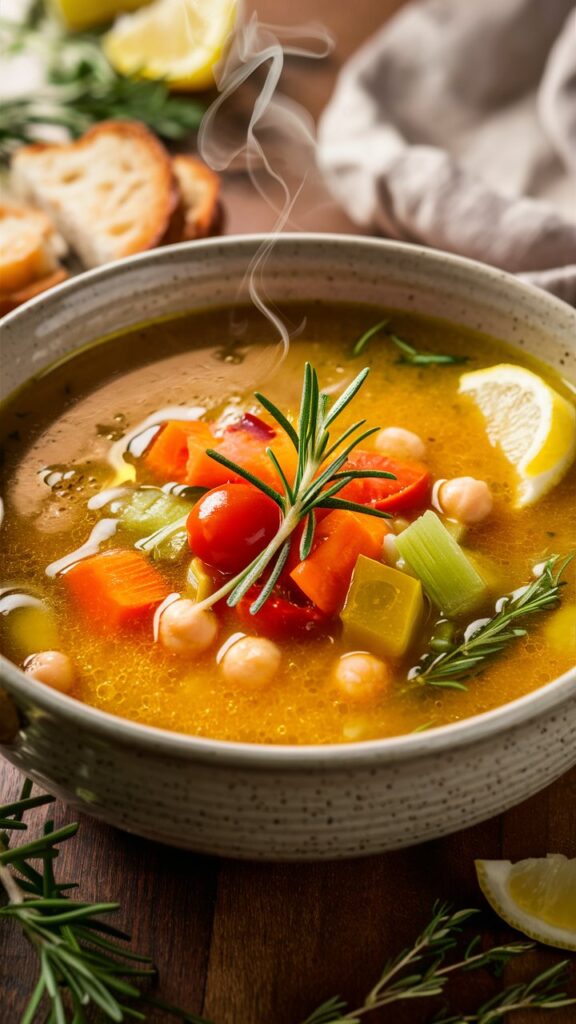
The nickname “Italian penicillin” always makes us laugh. My grandmother swore by it whenever someone sniffled, and to this day, if I call my mom with a scratchy voice, her first question isn’t “How are you?” but “Have you made the soup yet?”
It’s not just about the garlic and lemon (though both have immune-boosting reputations). It’s about the ritual of chopping, stirring, and waiting—the way the house fills with a steady, soothing aroma that makes you want to curl up with a blanket and a big bowl. That’s why it works. It nourishes more than just the body.
Pro Notes & Mistakes to Avoid
After making this soup dozens of times, here are the most common pitfalls—and how to avoid them:
- Overcooking the pasta: If you add pastina or rice too early, it will swell, soak up all the broth, and turn the soup into porridge. Always cook it toward the end.
- Forgetting to skim the broth: Those little foamy bits that rise in the first 15 minutes make the soup cloudy if left alone. A few swipes with a spoon keep things clear and clean-tasting.
- Adding lemon too soon: Lemon is delicate. Add it at the end to preserve brightness. If you simmer it too long, it dulls and loses its sparkle.
- Skipping the salt check: Because broth and Parmesan both bring salt, it’s easy to under-season or overdo it. Taste before adding more.
- Going heavy on garlic: Yes, garlic is the soul of this soup—but too much raw or burnt garlic will overpower the balance. Let it soften into sweetness instead of rushing it.
Each of these “mistakes” is one I’ve made myself, usually when I was distracted or impatient. They’re small details, but fixing them turns a good pot of soup into something you’ll crave again and again.
Making It Ahead and Storing
This soup keeps beautifully, but there are a few tricks:
- Refrigerator: Store in an airtight container for up to 4 days. The flavors deepen with time, but the pasta may swell. If you want to make it ahead, cook the pastina separately and add it fresh when reheating.
- Freezer: Freeze the broth and chicken without pasta for up to 3 months. When ready, reheat gently, add fresh lemon juice and parsley, and cook the pasta separately before combining.
- Reheating: Always warm on low heat. A rapid boil will turn the chicken stringy and the broth muddy.
In my house, I often double the recipe and freeze half. That way, when the next seasonal cold sneaks in, all I need to do is defrost a pot of comfort.
Questions People Often Ask
Can I make it vegetarian?
Yes. Use vegetable broth instead of chicken and skip the meat. Add hearty vegetables like zucchini, chickpeas, or cannellini beans for protein and texture.
What’s the best pasta for this soup?
Pastina is traditional, but orzo, ditalini, or even broken-up spaghetti works in a pinch. For gluten-free, rice is perfect.
Do I have to use bone-in chicken?
No, but I recommend it. Bones add depth and richness that boneless cuts can’t match. If you’re in a rush, boneless thighs still make a flavorful soup.
Is it really good for colds?
While I can’t claim it cures anything, the garlic, lemon, and steam can definitely soothe congestion and sore throats. At the very least, it makes you feel cared for, which is medicine in its own way.
Can I make it in a slow cooker?
Absolutely. Just layer the vegetables, chicken, broth, and let it go on low for 6–7 hours. Add parsley, lemon, and pasta at the very end for freshness.

